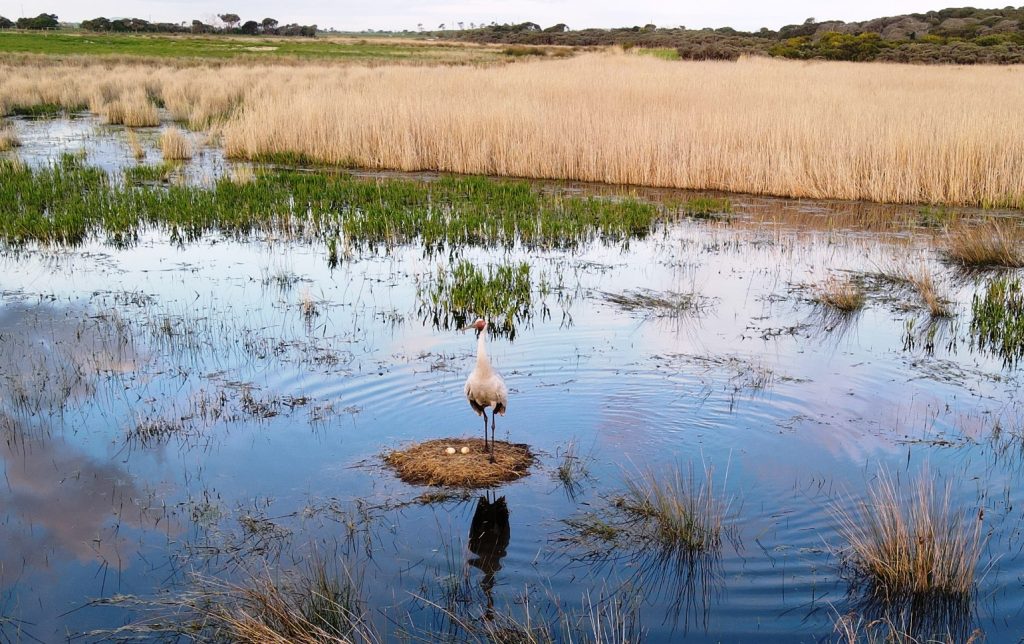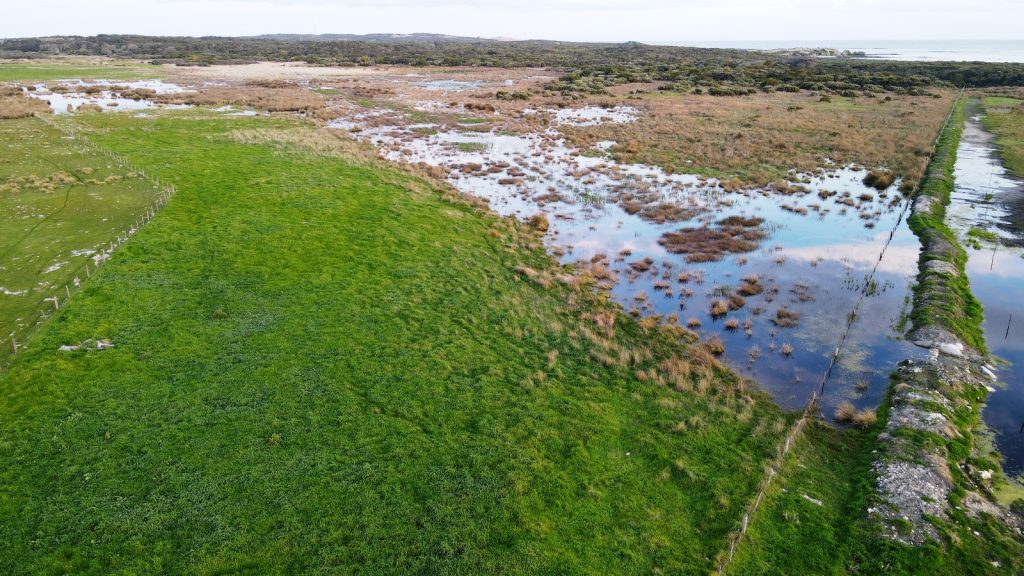Photo of the month: Brolga continue to give the tick of approval to NGT’s wetland restoration projects
Much of what goes on in a wetland after we’ve undertaken remedial works to restore hydrology or manage other threats, goes on quietly without fuss. For fish, frogs, crayfish and many of the smaller water birds, you actually have to go looking closely to find them.
However, one species that we hear about pretty quickly after they return is the Brolga – because this majestic bird is of a size that is very hard to miss!
Over the years we’ve been working to restore wetlands, we’ve seen the species return and successfully breed on two private wetlands on farms near Dartmoor and wetlands in the southern Grampians like Brady Swamp. We’ve also had significant success on our own restoration reserves, with Brolga regularly sighted at Mt Burr Swamp, flocking in increasing numbers each year at Green Swamp (peaking this year at over 200 birds in late autumn!), and successfully breeding in 2021 for the first time at Walker Swamp since that wetland was restored in 2019. This year we have been seeing two pairs hanging around at Walker Swamp, so watch this space!
In some more exciting news and in another endorsement of the value of wetland restoration to this species, NGT’s Hutt Bay Wetland Restoration Reserve (on the coast south of Mt Gambier) is now the latest restored wetland to support a Brolga breeding pair. While we are not yet certain of the outcome of this attempt, the photo below of a Brolga nest with two eggs was taken in early September 2022, as a result of hydrological restoration works only completed in May this year. By any measure that is a quick endorsement of the value of wetland restoration!
Brolga are telling us very clearly with their behavioural choices that a lack of access to suitable large, freshwater wetlands for breeding is a limiting factor for this threatened species in our artificially dry landscape – a landscape where so many of our large wetlands were lost to drainage several decades ago or more. This is why so many wetlands we are restoring are now being frequented or utilised by the species.
If you would like to restore an artificially drained wetland on your property, then we will do whatever we can to help, so please don’t hesitate to get in touch ().
Finally, just to wrap up this story, it is worth sharing with you how the eastern end of the Hutt Bay wetland has seen a rapid improvement in function this year, now more closely resembling its original hydrological state. To see why the works (minor levee bank and spillway) shown below are retaining significantly more water in this part of the wetland, please take a closer look at this previous update.


